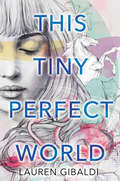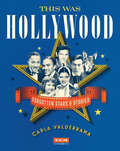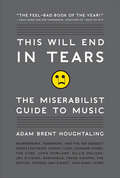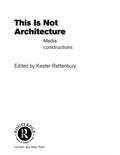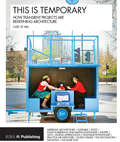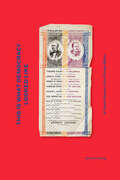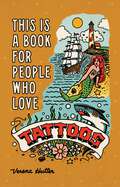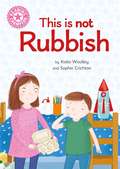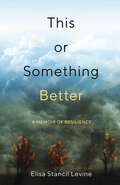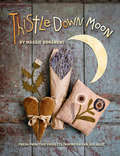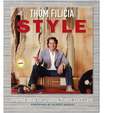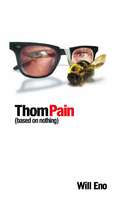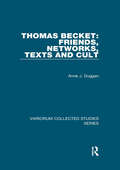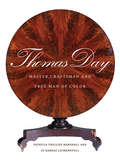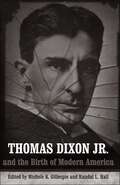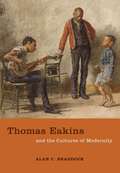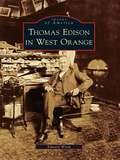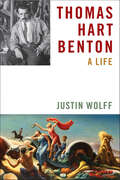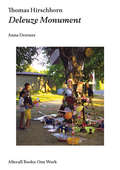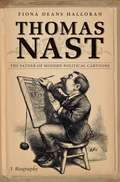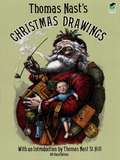- Table View
- List View
This Tiny Perfect World
by Lauren GibaldiThe big-hearted story of a small-town girl who discovers how wide the world really is during one transformative summer. Perfect for fans of Susane Colasanti and Sarah Dessen.Penny loves her small-town Florida life, and she has her future mapped out. She’s going to community college after graduation to stay close to home and her best friend, Faye. She’ll take over the family diner that her dad has been managing since her mother died. And one day, she’ll marry her high school sweetheart, Logan. But when she unexpectedly lands a scholarship to a prestigious summer theater camp, she is thrust into a world of competition and self-doubt. And suddenly, her future gets a little hazy. As she meets new friends, including Chase, a talented young actor with big-city dreams, she begins to realize that maybe the life everyone (including her) expects her to lead is not the one she was meant to have.From the acclaimed author of The Night We Said Yes and Autofocus.
This Was Burlesque
by Ann Corio Joseph DiMonaA rollicking, colorfully illustrated history of burlesque as seen through the eyes of its first lady, Ann Corio.
This Was Hollywood: Forgotten Stars and Stories (Turner Classic Movies)
by Carla ValderramaIn this one-of-a-kind Hollywood history, the creator of Instagram's celebrated @ThisWasHollywood reveals the forgotten past of the film world in a dazzling visual package modeled on the classic fan magazines of yesteryear.From former screen legends who have faded into obscurity to new revelations about the biggest movie stars, Valderrama unearths the most fascinating little-known tales from the birth of Hollywood through its Golden Age.The shocking fate of the world's first movie star. Clark Gable's secret love child. The film that nearly ended Paul Newman's career. A former child star who, at ninety-three, reveals her #metoo story for the first time. Valderrama unfolds these stories, and many more, in a volume that is by turns riveting, maddening, hilarious, and shocking.Drawing on new interviews, archival research, and an exhaustive library of photographs, This Was Hollywood is a compelling and visually stunning catalogue of the lost history of the movies.
This Will Be Funny Someday
by Katie HenryThe Marvelous Mrs. Maisel comes to high school in acclaimed author Katie Henry’s coming-of-age YA contemporary about a girl who accidentally falls into the world of stand-up comedy. Perfect for fans of John Green and Becky Albertalli! Sixteen-year-old Izzy is used to keeping her thoughts to herself—in school, where her boyfriend does the talking for her, and at home, where it’s impossible to compete with her older siblings and high-powered parents.When she mistakenly walks into a stand-up comedy club and performs, the experience is surprisingly cathartic. After the show, she meets Mo, an aspiring comic who’s everything Izzy’s not: bold, confident, comfortable in her skin. Mo invites Izzy to join her group of friends and introduces her to the Chicago open mic scene. The only problem? Her new friends are college students—and Izzy tells them she’s one, too. Now Izzy, the dutiful daughter and model student, is sneaking out to perform stand-up with her comedy friends. Her controlling boyfriend is getting suspicious, and her former best friend knows there’s something going on.But Izzy loves comedy and this newfound freedom. As her two parallel lives collide—in the most hilarious of ways—Izzy must choose to either hide what she really wants and who she really is, or finally, truly stand up for herself.
This Will End in Tears: The Miserabilist Guide to Music
by Adam Brent HoughtalingThis Will End in Tears is the first ever and definitive guide to melancholy music. Author Adam Brent Houghtaling leads music fans across genres, beyond the enclaves of emo and mope-rock, and through time to celebrate the albums and artists that make up the miserabilist landscape. In essence a book about the saddest songs ever sung, This Will End in Tears is an encyclopedic guide to the masters of melancholy—from Robert Johnson to Radiohead, from Edith Piaf to Joy Division, from Patsy Cline to The Cure—an insightful, exceedingly engaging exploration into why sad songs make us so happy.
This is 40: The Shooting Script (Shooting Script)
by Judd ApatowFive years after Judd Apatow introduced us to Pete and Debbie in Knocked Up, Paul Rudd and Leslie Mann reprise their roles as the couple in the writer/director's This Is 40, a comedic look at the everyday life of an American family. What emerges is a portrait of the challenges and rewards of marriage and parenthood: sex and romance, career triumphs and financial hardships, aging parents and maturing children and everything in between. This Is 40 captures what it takes for a family to flourish in the middle of a lifetime together, rendered with the unique intimacy of a filmmaker collaborating with his own wife and children.The Newmarket Shooting Script Book includes: An introduction by writer/actor Lena Dunham written especially for this edition Judd Apatow's answers to "Five Obvious Questions" and an afterword on his writing/directing process The complete screenplay 35 color photographs Complete cast and crew credits
This is Not Architecture: Media Constructions
by Kester RattenburyThis is Not Architecture assembles architectural writers of different kinds - historians, theorists, journalists, computer game designers, technologists, film-makers and architects - to discuss the characteristics, cultures, limitations and bias of the different kinds of media, and to build up an argument as to how this complex culture of representations is constructed.
This is Temporary: How transient projects are redefining architecture
by Cate St HillTemporary architecture is flourishing in our urban public spaces. Branded ‘pop-ups’ and follies to provide a moment of light entertainment they are in fact borne of a long history of more holistic architecture that is subtly suggesting how we could live, work and play more harmoniously together. Featuring revealing interviews with 13 young, emerging and socially-minded practices from New York and Santiago to London, Berlin and Zurich it also analyses this phenomenon in critical essays by well-respected practitioners and thinkers. Providing a highly personal insight into the architects’ experience, the design process, the challenges they encountered and how it affected their practice it sheds light on the growth of multidisciplinary collectives, community engagement and more participatory ways of designing, making and building. Including highly illustrated and imaginative projects ranging from a floating cinema and tiny travelling theatre, through ad-hoc structures made of found objects and discarded materials, and blow-up plastic bubbles, to a community lido and market restaurant this will open your eyes as to what is possible in architecture.
This is What Democracy Looked Like: A Visual History of the Printed Ballot
by Alicia ChengThis Is What Democracy Looked Like, the first illustrated history of printed ballot design, illuminates the noble but often flawed process at the heart of our democracy. An exploration and celebration of US ballots from the nineteenth and early twentieth centuries, this visual history reveals unregulated, outlandish, and, at times, absurd designs that reflect the explosive growth and changing face of the voting public. The ballots offer insight into a pivotal time in American history—a period of tectonic shifts in the electoral system—fraught with electoral fraud, disenfranchisement, scams, and skullduggery, as parties printed their own tickets and voters risked their lives going to the polls.
This is a Book for People Who Love Tattoos
by Verena HutterJourney from ink to skin with This Is a Book for People Who Love Tattoos, a glorious full-color celebration of the history and craft of tattooing. From the earliest known origins of tattooing to the latest trends, this gorgeously illustrated guide offers a deep look at the culture of American Traditional style tattoos. Tattoo aficionado and historian Verena Hutter profiles not just the key tattoo artists who inspired the style, such as Sailor Jerry, Bert Grimm, and Dainty Dottie, but also the meanings and origins behind some of the most iconic designs found in tattoo shops across the globe She traces the indelible &“I love Mom&” tattoo back to a 19th-century folk song sung by Irish sailors and reveals the significance of eagles, skulls, horseshoes, lighthouses, and dozens of other designs. This Is a Book for People Who Love Tattoos will inspire your next tattoo session while celebrating the rich history of the craft.
This is not Rubbish: Independent Reading Non-Fiction Pink 1a (Reading Champion #515)
by Katie WoolleyThis book is part of Reading Champion, a series carefully linked to book bands to encourage independent reading skills, developed with UCL Institute of Education (IOE)This is not Rubbish is a non-fiction text exploring how different objects may be reused and recycled. The repeated sentence structure offers readers the opportunity for a very first independent reading experience with the support of the illustrations.Reading Champion offers independent reading books for children to practise and reinforce their developing reading skills.This non-fiction text is accompanied by engaging artwork and a reading activity. Each book has been carefully graded so that it can be matched to a child's reading ability, encouraging reading for pleasure.
This or Something Better: A Memoir of Resilience
by Elisa Stancil LevineWhen the Sonoma Complex fire came to Elisa Stancil Levine’s California doorstep in 2017, her world changed overnight. The devastating fire torched thousands of acres, but for Elisa, a world-class decorative artist, it was her reaction that night that cracked her wide open. A loving wife, mother, and grandmother, Elisa thought she had reckoned with her early childhood trauma. But when she fled the midnight firestorm without alerting a single neighbor, she had to ask herself: Who does that?In This or Something Better, Elisa revisits her past and the one force in which she has always found true kinship: the wild river. Nature, her lifelong ally, gave solace . Through teen pregnancy, her baby’s stillbirth, and a mystical near-death experience at eighteen, nature shaped her character, and it later informed her wildly successful career. But was there an unintended consequence?The fresh trauma of the firestorm sparked a quest: what treasure awaited if Elisa learned to trust human nature? Vivid, poetic, and intimate, This or Something Better reveals how true healing of deep wounds happens one exquisite layer at a time—and invites us each to consider and embrace our own path toward wholeness and authenticity.
Thistle Down Moon: Fresh Primitive Projects Inspired by an Old Quilt
by Maggie BonanomiShare in the creative outpouring a ratty old quilt inspired to craft rustic and earthy projects from a pincushion to a hooked rug.Primitive artist Maggie Bonanomi discovered a great old quilt. She marveled, played and let her mind wander. This book is the result. She’s created an exciting new quilt, which inspired a pile of matching pillows. Her Thistle Down Moon mat and rug designs sprung from memories of summer nights riding bikes with her sister. She’s also designed sewing accessories: a sewing case, pincushion, a wall-hung sewing necessity, a handy pocket and a necklace. Primitive home decorators are not forgotten—besides the quilt and pillows, you’ll find a table runner, a cross-stitch sampler and penny-topped stools. There’s even a multipurpose butcher’s apron. Maggie’s well never runs dry. Enjoy her latest creations, 19 in all.
Thom Filicia Style
by Thom Filicia"I'm a democratic design snob. I see it as my mission to help stamp out boring, unimaginative interiors. But I also love people, having fun, and what I do for a living. I think a fabulously styled place is achievable by everyone. Think of me as your decorating wingman." Thom Filicia, whose one-of-a-kind makeover genius gained national attention through his starring roles on Queer Eye for the Straight Guy and Dress My Nest, offers the ultimate handbook for creating gorgeous interiors that showcase your unique personal style. Those who have witnessed Thom's remarkable makeovers on television already know about the much-anticipated reveal moment when the emotionally overwhelmed homeowners are struck speechless by the miracle he has created. The same miracle is now possible for your home, with the secrets and tips contained in Thom Filicia Style. With his trademark wit and friendly voice, Thom deconstructs how he works his magic and provides pages of invaluable advice, inspiration, before-and-after photos, case studies, floor plans, and product information. His approach will help you elevate your personal aesthetic by strategizing the best ways to make the most out of every space. From his work on a Manhattan loft to a suburban family home, Thom brings a fresh and invigorating vision to the way we live -- a vision that can apply to homes and decorating budgets of any size. Demystifying the decorating process one step at a time, Thom has filled this guide with everything you need to create the perfect interior. Thom Filicia Style is like having the designer himself on hand to take care of all the details.
Thom Pain (based on nothing) [Trade Edition]
by Will Eno"Astonishing in its impact. . . One of the treasured nights in the theatre that can leave you both breathless with exhilaration and, depending on your sensitivity to meditations on the bleak and beautiful mysteries of human experience, in a puddle of tears . . . Thom Pain is at bottom a surreal meditation on the empty promises life makes, the way experience never lives up to the weird and awesome fact of being. But it is also, in its odd, bewitching beauty, an affirmation of life's worth."--Charles Isherwood, The New York Times"Eno has emerged as one of the most original young playwrights on the scene. He is one of the few writers who can convert discomfort and outright agony into such pleasure."--David Cote, TimeOut New York"Will Eno is one of the finest younger playwrights I've come across in a number of years. His work is inventive, disciplined and, at the same time, wild and evocative."--Edward AlbeeWhen Will Eno's one-person play Thom Pain opened in New York in February 2005, it became something rare--an unqualified hit, which soon extended through July. Before that, the play was a critical success in London and received the coveted Fringe First Award at the Edinburgh Festival. Dubbed "stand-up existentialism" by The New York Times, it is lyrical and deadpan, both sardonic and sincere. It is Thom Pain--in the camouflage of the common man--fumbling with his heart, squinting into the light.Will Eno lives in Brooklyn, New York. His plays include The Flu Season, Tragedy: a tragedy, King: a problem play, and Intermission. His plays have been produced in London by the Gate Theatre and BBC Radio, and in the United States by Rude Mechanicals and Naked Angels. His play The Flu Season recently won the Oppenheimer Award, presented by NY Newsday for the previous year's best debut production in New York by an American playwright.
Thomas Becket: Friends, Networks, Texts and Cult (Variorum Collected Studies #877)
by Anne J. DugganBecket's life was lived on a European stage, his cause was conducted in a European setting, and the cult of the new martyr spread with extraordinary rapidity to the furthest reaches of Latin Christendom before the end of the twelfth century. The fifteen studies collected here reflect not only the global reach of the subject but the diverse expertise of their author, whose edition and translation of the Correspondence of Archbishop Thomas Becket (2000) and acclaimed biography (Thomas Becket, 2004) have established her place in Becket studies. Based on the critical examination of manuscripts and texts, this collection focuses first on the papal curia and Becket's household in exile. The following studies deal with Becket's letters and their authorship, the coronation of the young King Henry (1170), and Henry II's reconciliation at Avranches (1172). The final part traces the explosion of Becket's cult, the transmission of hagiographical and liturgical texts to France, Germany, and Portugal, and the role of diverse agencies of dissemination: Henry II's daughters, for example, in Saxony, Castile, and Sicily, and the Cistercian and Augustinian orders whose networks of houses embraced the whole of Europe.
Thomas Day: Master Craftsman and Free Man of Color
by Patricia Phillips Marshall Jo Ramsay LeimenstollThomas Day (1801-61), a free man of color from Milton, North Carolina, became the most successful cabinetmaker in North Carolina--white or black--during a time when most blacks were enslaved and free blacks were restricted in their movements and activities. His surviving furniture and architectural woodwork still represent the best of nineteenth-century craftsmanship and aesthetics. In this lavishly illustrated book, Patricia Phillips Marshall and Jo Ramsay Leimenstoll show how Day plotted a carefully charted course for success in antebellum southern society. Beginning in the 1820s, he produced fine furniture for leading white citizens and in the 1840s and '50s diversified his offerings to produce newel posts, stair brackets, and distinctive mantels for many of the same clients. As demand for his services increased, the technological improvements Day incorporated into his shop contributed to the complexity of his designs. Day's style, characterized by undulating shapes, fluid lines, and spiraling forms, melded his own unique motifs with popular design forms, resulting in a distinctive interpretation readily identified to his shop. The photographs in the book document furniture in public and private collections and architectural woodwork from private homes not previously associated with Day. The book provides information on more than 160 pieces of furniture and architectural woodwork that Day produced for 80 structures between 1835 and 1861. Through in-depth analysis and generous illustrations, including over 240 photographs (20 in full color) and architectural photography by Tim Buchman, Marshall and Leimenstoll provide a comprehensive perspective on and a new understanding of the powerful sense of aesthetics and design that mark Day's legacy.
Thomas Dixon Jr. and the Birth of Modern America (Making the Modern South)
by Michele K. Gillespie Randal L. Hall"A sweeping yet rigorous analysis of Dixon and his work. The collection approaches the southern intellectual through multiple methodologies -- from literary theory and film studies to social history and religious studies. We get an exhaustive yet diverse perspective on Dixon's influence and legacy." -- Journal of American HistoryThomas Dixon Jr. (1864--1946), best remembered today as the author of the racist novels that served as the basis for D. W. Griffith's controversial 1915 classic film The Birth of a Nation, also enjoyed great renown in his lifetime as a minister, lecturer, lawyer, and actor. Although this native southerner's blatantly racist, chauvinistic, and white supremacist views are abhorrent today, his contemporary audiences responded enthusiastically to Dixon. In Thomas Dixon Jr. and the Birth of Modern America, distinguished scholars of religion, film, literature, music, history, and gender studies offer a provocative examination of Dixon's ideas, personal life, and career and in the process illuminate the evolution of white racism in the early twentieth century and its legacy down to the present. The contributors analyze Dixon's sermons, books, plays, and films seeking to understand the appeal of his message within the white culture of the Progressive era. They also explore the critical responses of African Americans contemporary with Dixon. By delving into the context and complexity of Dixon's life, the contributors also raise fascinating questions about the power of popular culture in forming Americans' views in any age. "An important and valuable addition to the literature on turn-of-the-century white supremacy." -- Journal of Southern History
Thomas Eakins and the Cultures of Modernity
by Alan BraddockThe Author demonstrates that Eakins's realistic portrayals of Spanish street performers, African Americans, and southern European immigrants embodied a modern worldview. Yet by exploring Eakins's struggle to visualize diversity amid the dislocating forces of his day mass immigration, Orientalism, tourism, commercial publishing, and the international circulation of ethnographic objects.
Thomas Edison in West Orange
by Edward WirthThomas Edison spent the second half of his life in West Orange, about 10 miles from New York City. There he built his last and largest laboratory, where he developed motion pictures, improved the phonograph, and built an international business empire, earning over half of his 1,093 patents. The five laboratory buildings housed over 100 experimenters busily engaged in invention and innovation. As they turned ideas into commercial products, Edison surrounded the laboratory with factories that employed over 4,000 workers. From the first days, staff photographers documented every aspect of life in this town within a town.
Thomas Hart Benton: A Life
by Justin WolffBorn in Missouri at the end of the nineteenth century, Thomas Hart Benton would become the most notorious and celebrated painter America had ever seen. The first artist to make the cover of Time, he was a true original: an heir to both the rollicking populism of his father's political family and the quiet life of his Appalachian grandfather. In his twenties, he would find his calling in New York, where he was drawn to memories of his small-town youth—and to visions of the American scene.By the mid-1930s, Benton's heroic murals were featured in galleries, statehouses, universities, and museums, and magazines commissioned him to report on the stories of the day. Yet even as the nation learned his name, he was often scorned by critics and political commentators, many of whom found him too nationalistic and his art too regressive. Even Jackson Pollock, his once devoted former student, would turn away from him in dramatic fashion. A boxer in his youth, Benton was quick to fight back, but the widespread backlash had an impact—and foreshadowed many of the artistic debates that would dominate the coming decades.In this definitive biography, Justin Wolff places Benton in the context of his tumultuous historical moment—as well as in the landscapes and cultural circles that inspired him. Thomas Hart Benton—with compelling insights into Benton's art, his philosophy, and his family history—rescues a great American artist from myth and hearsay, and provides an indelibly moving portrait of an influential, controversial, and often misunderstood man.
Thomas Hirschhorn: Deleuze Monument (One Work)
by Anna DezeuzeAn illustrated examination of one of Hirschhorn's “precarious” monuments, now dismantled. Part-text, part-sculpture, part-architecture, part-junk heap, Thomas Hirschhorn's often monumental but precarious works offer a commentary on the spectacle of late-capitalist consumerism and the global proliferation of commodities. Made from ephemeral materials—cardboard, foil, plastic bags, and packing tape—that the artist describes as “universal, economic, inclusive, and [without] any plus-value,” these works also engage issues of justice, power, and moral responsibility. Hirschhorn (born in Switzerland in 1957) often chooses to place his work in non-art settings, saying that he wants it to “fight for its own existence.” In this book, Anna Dezeuze offers a generously illustrated examination of Hirschhorn's Deleuze Monument (2000), the second in his series of four Monuments. Deleuze Monument—a sculpture, an altar, and a library dedicated to Gilles Deleuze—was conceived as a work open to visitors twenty-four hours a day, seven days a week. Part of the exhibition “La Beauté” in Avignon, Deleuze Monument was controversial from the start, and it was dismantled two months before the end of the exhibition after being vandalized. Dezeuze describes the chronology of the project, including negotiations with local residents; the dynamic between affirmation and vulnerability in Hirschhorn's work; failure and ”scatter art” in the 1990s; participatory practices; and problems of presence, maintenance, and appearance, raised by Hirschhorn's acknowledgement of “error” in his discontinuous presence on site following the installation of Deleuze Monument.
Thomas Holcroft’s Revolutionary Drama: Reception and Afterlives (Transits: Literature, Thought & Culture, 1650-1850)
by Amy GarnaiA key figure in British literary circles following the French Revolution, novelist and playwright Thomas Holcroft promoted ideas of reform and equality informed by the philosophy of his close friend William Godwin. Arrested for treason in 1794 and released without trial, Holcroft was notorious in his own time, but today appears mainly as a supporting character in studies of 1790s literary activism. Thomas Holcroft’s Revolutionary Drama authoritatively reintroduces and reestablishes this central figure of the revolutionary decade by examining his life, plays, memoirs, and personal correspondence. In engaging with theatrical censorship, apostacy, and the response of audiences and critics to radical drama, this thoughtful study also demonstrates how theater functions in times of political repression. Despite his struggles, Holcroft also had major successes: this book examines his surprisingly robust afterlife, as his plays, especially The Road to Ruin, were repeatedly revived worldwide in the nineteenth century.
Thomas Nast
by Fiona Deans HalloranThomas Nast (1840-1902), the founding father of American political cartooning, is perhaps best known for his cartoons portraying political parties as the Democratic donkey and the Republican elephant. Nast's legacy also includes a trove of other political cartoons, his successful attack on the machine politics of Tammany Hall in 1871, and his wildly popular illustrations of Santa Claus for Harper's Weekly magazine. Throughout his career, his drawings provided a pointed critique that forced readers to confront the contradictions around them. In this thoroughgoing and lively biography, Fiona Deans Halloran focuses not just on Nast's political cartoons for Harper's but also on his place within the complexities of Gilded Age politics and highlights the many contradictions in his own life: he was an immigrant who attacked immigrant communities, a supporter of civil rights who portrayed black men as foolish children in need of guidance, and an enemy of corruption and hypocrisy who idolized Ulysses S. Grant. He was a man with powerful friends, including Mark Twain, and powerful enemies, including William M. "Boss" Tweed. Halloran interprets Nast's work, explores his motivations and ideals, and illuminates Nast's lasting legacy on American political culture.
Thomas Nast's Christmas Drawings (Dover Fine Art, History of Art)
by Thomas NastSixty-six Yuletide illustrations -- almost all holiday drawings -- by one of America's foremost illustrators and the creator of the popular Santa Claus image. Finely detailed drawings of St. Nick, sleigh rides, reindeer, "The Night Before Christmas," North Pole, and more are all depicted in this seasonal collection.
